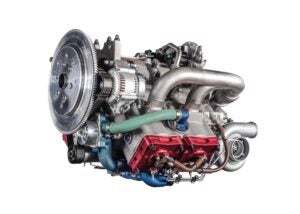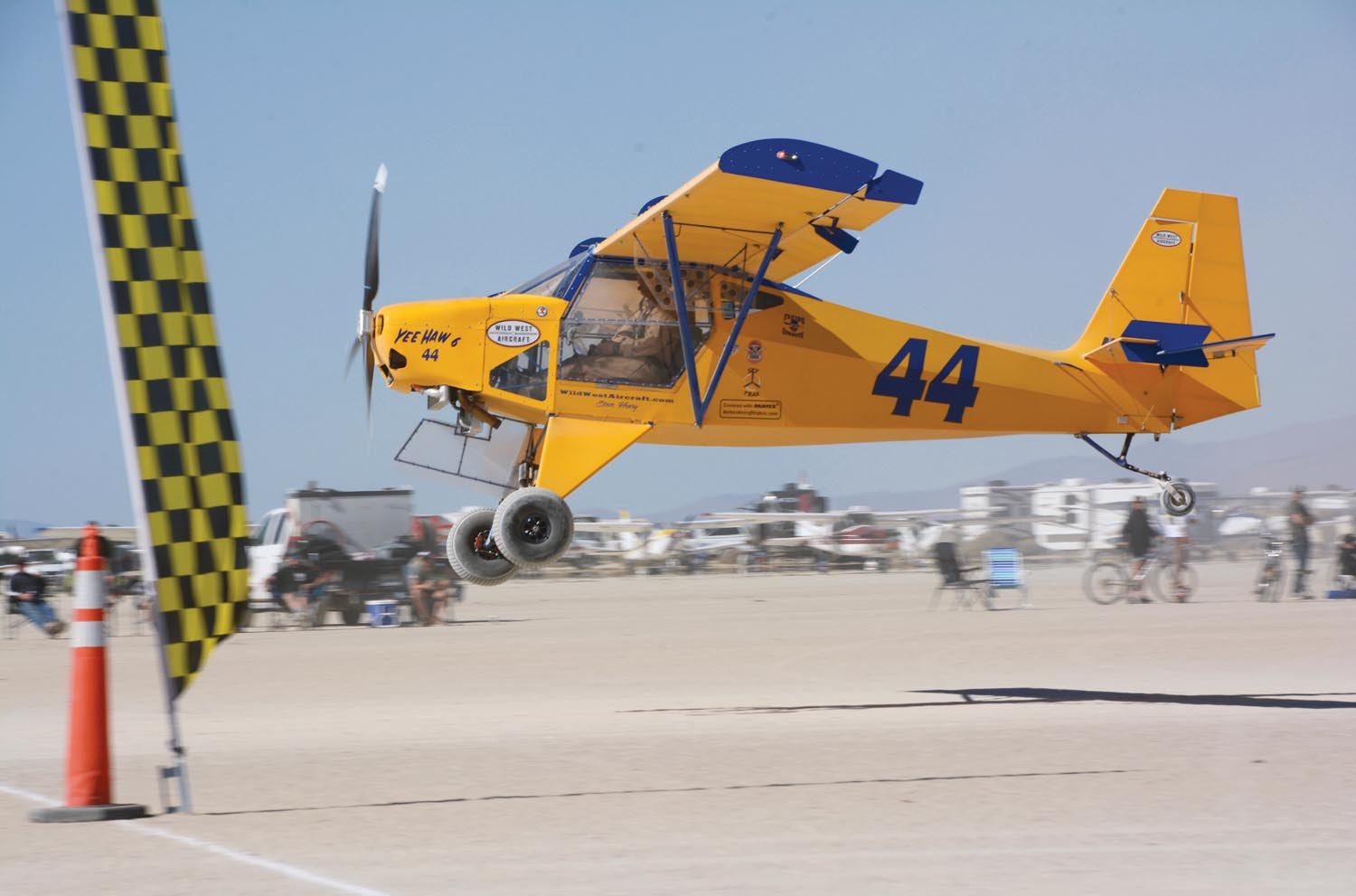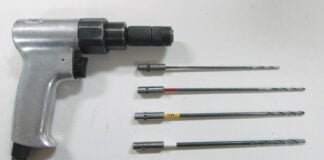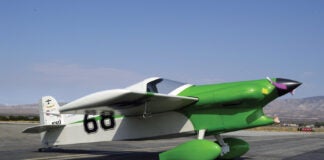 Building Experimental aviation engines is a tough business at best, so engine programs come and go. Furthermore, as sport aviation blossoms into the competition arena (pylon racing, hard-core aerobatics, STOL competitions), the general kitbuilding populace is being exposed to high-strung engines not really suitable for mainstream aviating.
Building Experimental aviation engines is a tough business at best, so engine programs come and go. Furthermore, as sport aviation blossoms into the competition arena (pylon racing, hard-core aerobatics, STOL competitions), the general kitbuilding populace is being exposed to high-strung engines not really suitable for mainstream aviating.
Therefore, below is a gathering of currently limited application or not-for-sale engines and parts of interest. Some are new projects coming together, others are old programs gliding along, some are hot rods. Just because they’re listed here doesn’t mean they are somehow second-rate or might never see production, but at least at our deadline they either weren’t for sale or in custom-build status or highly specialized for mainstream kitbuilding.
Altruair
Based in San Diego, engineering firm Alturair is difficult to categorize if only because owner Frank Verbeke has for decades been involved in a wide swath of aviation including piston, turbojet, turbofan, turboprop and Wankel engines. But for our present purposes Alturair has its own line of Wankel rotary engines and is a treasure trove of BD-5 knowledge, plans, tooling and hardware as they own the rights to that design. Specifically, Altruair has developed a 100-hp single-rotor Wankel for the BD-5 and anyone with BD-5 affiliation would do well to tap into Altruair’s expertise; the same goes for aviation Wankels.
DeltaHawk

Racine, Wisconsin-based DeltaHawk has been slowly developing their all-new engine for decades. An influx of major funding a few years ago saw them make a big splash at AirVenture 2023 with FAA certification completed and planned customer deliveries set for Q3 2024.
The all-new engine is a two-stroke, Jet A-burning compression-ignition, 90° V-4. Both a screw-type compressor (mechanical supercharger) and a turbocharger are fitted to facilitate starting and provide intake boost at all engine speeds; an intercooler is mounted between the compressor and turbocharger.
Simplicity is the central hallmark of the design and it is indeed elegantly spare engineering-wise. The internal engine parts count is impressively low, weight should not be a major consideration and there is no valve train meaning reduced manufacturing expense and no valves to stick or burn. Ease of major maintenance is also provided, with every accessory mounted on the outside of the engine, all the way down to the dry sump oil pump. There are no electronics; fuel is supplied via mechanical Bosch-style fuel injection.
The initial offering is the DHK180, displacing 202 cubic inches (3.3 liters) and rated at 180 hp. In the works are 200- and 225-hp versions, and a higher horsepower family of engines is planned. DeltaHawk is sure to add cylinders at some point, a capability built into the design.
Engine dyno and flight testing were ongoing in 2023, using Cirrus and Twin Velocity test airframes. Going into 2024 a hydrogen fuel variant was in development. Customer deposits have been accepted since AirVenture 2023 and a 24-month/2000-hour warranty established. That can be extended to 36 months with data download and oil analysis.
There are many other potential wins in the DeltaHawk design. It is a simple but not basic engine promising good performance and excellent fuel economy (DeltaHawk says 35% better than comparable gas engines). There are, of course, other considerations. The largest now is that the DeltaHawk is not a proven entity. We should not have long to wait for proof as its mechanical and business viability will most likely be decided in 2024–2025 as the world gains real-world experience with the DHK180.
For kit-aircraft builders the DeltaHawk holds promise if perhaps not instantaneous viability. With big engineering bills to pay, production to ramp up (over 30 engines have been built so far), along with their 100% U.S. engineering, manufacturing and funding, we’d think retail pricing should be challenging but DeltaHawk says they’ll be “very competitive with current engine offerings.”
So, once again we’re reminded that the price of progress is trouble, but we like what the DeltaHawk offers. The many operational and mechanical advantages from liquid cooling, including the major gain in fuel economy, are alone worth the consideration.
Franklin Aerospace
Seeing its heyday during WW-II and for quite a while afterward, the smooth-running Franklin lives on thanks to the amazing parts inventory produced during its run as a mainstream certified engine. The Franklin keeps a healthy following in the antique and certified ranks but is not particularly favored in the Experimental world. Its type certificate is now the property of a Polish company, leaving Franklin Aerospace in Thomasville, North Carolina, as the small U.S. firm tending to the Franklin faithful.
Geschwender
Old-timers may recall the Geschwender PSRU designed to work with Ford and Chevy V-8 engines. This surprisingly active and well-documented program fell dormant with the death of Fred Geschwender years ago, but Leonard Anderson, under the Anderx Innovations Corporation name in Oceanside, California, is slowly working toward reviving the gearbox for big-bore Experimentals. Interested parties can reach Anderson at lganderz@anderx.com.
Heron Engines
A Greek company doing business in Crete, Heron is developing a very lightweight, 130-hp turboprop. They were planning on production by the end of 2022, but as these things will go, it’s now going to be late 2024 when the first production engines are delivered, says Heron. Aero Affinity in DeLand, Florida (www.aeroaffinity.com), is Heron’s North American representative.
HIGGS Diesel
We’ve covered the very innovative HIGGS Diesel program in detail in previous engine guides, but so far we have not seen any production versions of these engines in Experimental or general aviation applications. North American distributor Aircraft Service & Parts in Bakersfield, California (www.team-asap.com), is the place for early adoptors to call if interested in helping this very different Jet A-burning piston design onto an airframe.
HKS

From the other side of the world, Japan gave us the 60-hp (58 hp continuous) HKS 700E. Parts, service and a few of the time-tested two-cylinders remain available through Quicksilver Aircraft Northeast. These engines feature reduction gearing (two ratios available), a 1000-hour TBO and pricing in the $15,000 range when fully dressed with dry-sump oil tank, oil cooler and throttle cable.
Radial Motion
Hailing from Adelaide, Australia, is nascent engine maker Radial Motion. Best described as in the mid-prototype stage, the company is developing a three-cylinder, liquid-cooled radial engine in both 2.0- and 2.1-liter form. It uses Chevy LS reciprocating parts (rocker arms, connecting rods, valves and pistons) in a unique radial layout dispensing with the traditional master and link rod architecture. Power is rated from 70 hp naturally aspirated up to 200 hp turbocharged. Various automotive and a gyrocopter fitment were underway last year but we’ve seen no additional aviation work from Radial Motion since.
R.E.D. AO3-005
Not for the mainstream experimenter if only because of price (don’t ask, but $250,000 in round numbers) and the need for sophisticated integration into the airframe, the R.E.D. AO3-005 V-12 is the benchmark production aviation piston engine of our time. Built in Germany in small numbers—perhaps 70 so far—the Jet A-burning turbo motor has so far been found mainly on sophisticated, better-funded commercial prototypes. Examples are the Airlander dirigible, Ampaire Eco-Caravan, Otto Celera 500 and several others.
Worth mentioning because it shows what is possible with a modern design, the RED V-12 is rated at 500 or 550 hp depending on how its electronic engine management is configured. It gives excellent fuel economy from widely available, lead-free and likely “sustainable”
Jet A while delivering exceptional power for a piston engine. The liquid cooling allows worry-free operation devoid of shock cooling, and it is notably less expensive to purchase and operate than a turbine.
Several STCs are underway for the AO3-005, among them one to replace Pratt & Whitney radials on de Havilland Beavers. Eventually this engine will migrate to private owners, albeit wealthy ones. In the meantime its performance sets a goal for the rest of us.
Torque Master
Robert Baslee of Airdrome Aeroplanes says they have left the VW engine business, thus closing their Torque Master line of VWs as of late 2023.
TurbAero
Dave Limmer reports TurbAero’s journey to bring a compact, 200-hp turboprop to market is “still making progress, albeit slower than we would like.” A running prototype is their next goal, so we’ll keep an eye on this small company for 2025.
Warner Engine Company
John Duncan is the type certificate holder for the well-respected antique Warner radials. He does business as The Warner Engine Company and has a good selection of certified Warner parts for sale, but no complete engines.

Yamaha EPeX
“Welcome race fans” is a suitable introduction to this family of very hot-to-trot Yamaha engines available from BadAss PowerSports, Mohawk Aero Craft and others. Most famous for its winning ways in Steve Henry’s Just Highlander, this 9000-rpm, 300+ hp four-banger is great for winning STOL competitions but is a high-strung beast needing fairly regular attention by an involved, tech-savvy owner and is not particularly sport flying friendly. The same holds for the newer three-cylinder Yamaha race motor as well.
Yusimiti
Debuting a completely new engine at AirVenture 2023, Yusimiti is a small Taiwanese electrical products maker switching to aviation power. Their engine follows classic four-cylinder, horizontally opposed, air-cooled architecture, and indeed almost every aspect of it will look familiar. The big attraction is price; Yusimiti was quoting a retail price of $25,000 for a brand-new, 110-hp engine at AirVenture, which is attention getting. Yusimiti says they do their own castings, farm out much of the machining and do their own assembly. With their electrical background they also obviously supply their own dual 10-amp transistorized ignition system.
Generally the Yusimiti seems to follow a mix of Lycoming and Continental practice, although to be fair almost any flat four engine would end up similarly. The camshaft lives above the crankshaft, à la Lycoming, but the pushrod tubes look like spring-loaded Continental units. The steel-lined cylinders do differ dramatically with the one-piece aluminum casting incorporating the cylinder head and cylinder into one piece. Yusimiti does not use a surface treatment for the steel cylinder but rather casts the finned aluminum barrel around a solid steel liner.
The new engine’s specifications are pretty standard. It’s a four-stroke, direct-drive, four-cylinder with hydraulic lifters. It displaces 201 cubic inches (3.3 liters) from a 108mm bore and 90mm stroke, is rated at 110 hp at 2800 hp (not the more normal 2700 rpm) and with a 9:1 compression ratio runs on 95/98 octane mogas or 100LL. Installed weight is listed at 75 kg or 165 pounds with oil, alternator and carburetor. The single engine shown at AirVenture wore a carburetor but fuel injection is said to be an option. At our deadline no U.S. distributor had been announced. Yusimiti says they are ready for or already in production and are taking retail orders, but apparently only via their Taiwan-based website.
Zero Motorcycle/Zaero Drive Kit
There’s no plug-and-play electric motor package in the kit aircraft market, but the Zaero Drive Kit approximates such a thing. It’s not so much a product but rather a series of steps a motivated builder can perform to gut an electric Zero Motorcycle of its battery, motor and controller and mount it in an Experimental airplane.
The central character is Gabe DeVault of FLIT LLC and producer of the Zaero Drive Kit. This includes the re-drive, throttle assembly and some nuts and bolts—everything needed short of a Zero motorcycle, which is up to the builder to appropriate on their own. Even with the Zaero hardware it’s necessary to fabricate a custom motor mount for the airframe, along with light custom work integrating the Zaero bits as well. The exception is Sonex Aircraft. Sonex sells a Zaero-specific mount for the Xenos motorglider.
Naturally Zero Motorcycles doesn’t want a thing to do with any of this, so it’s necessary to buy one of their motorcycles and strip it. There is a user community with a vital reverse-engineered maintenance manual for the bikes that’s full of useful and otherwise difficult-to-find information. DeVault willingly assists and outside of a dealer is the only game in town with a Zero Motorcycle scan tool. That’s a must as some modification of the computer software is required in an aviation application.













